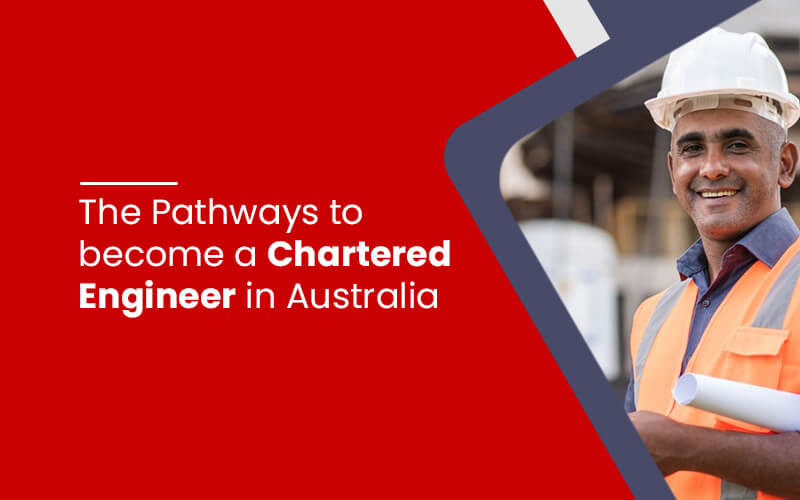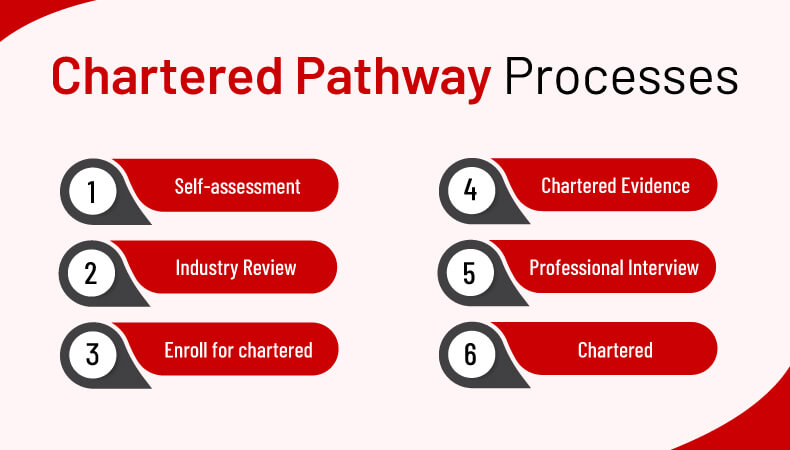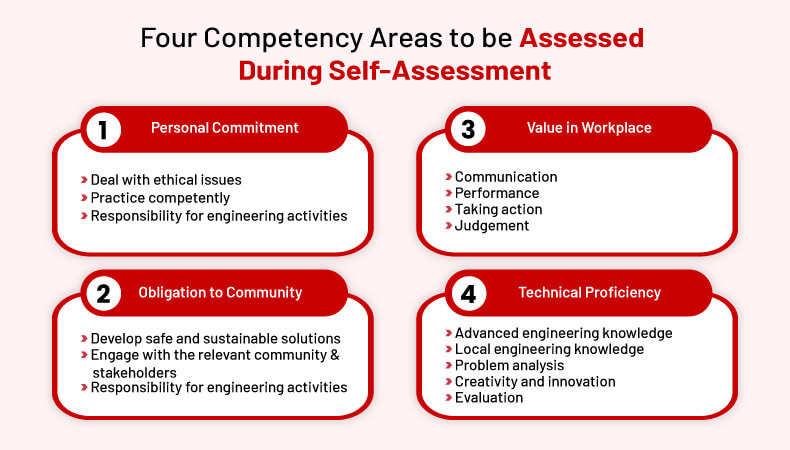The pathways to become a chartered engineer in Australia

Table of Contents
An Australian Chartered Engineer license is a tremendous way to kickstart your engineering career. It enables you to lay the foundation for yourself as an experienced, professional, and competent engineer in your professional field. The Chartership is the professional acknowledgment of those who are skilled, creative, and inventive engineers.
Engineers Australia, the largest professional community of engineers in Australia, offers its members the opportunity to attain the title of Chartered Engineer, with numerous possibilities.
There are three occupational categories for which chartered certification is obtainable:
- Associate Engineer
- Technologist Engineer
- Professional Engineer
For all of the following occupational groups, the application process is similar but the competency requirements may vary.
Eligibility criteria for Chartered Engineer in Australia
If you are confused as to what requirements are required to be eligible for chartered engineers then don’t be confused. First of all, You must meet the EA’s fundamental requirements to be chartered. You must’ve been a pre-approved professional engineer with a minimum of five years of job experience throughout Australia or internationally. If you are a foreign candidate from a nation that is not a member of the Dublin, Washington, or Sydney Accords, you must complete the stage 1 assessment: CDR pathway before proceeding to Chartered Engineer status.
Major advantages of becoming Chartered Engineer with Engineers Australia
The following are some of the advantages that chartered engineers have:
- Global Recognition:
Chartered engineers with EA are well known worldwide for their expertise, experience, skillset, and educational qualifications. As a result, chartered engineers can work with companies from all over the world if they have the appropriate work permits. - Professional Recognition:
Due to EA’s goodwill being recognized worldwide, Professional associations, governmental and non-governmental entities, and organizations internationally recognize Chartered Engineers. When you become a chartered engineer with Engineers Australia, you can work in any nation as a senior engineer or expert. - Leadership and Career Development:
To achieve the status of chartered engineer, engineers must present satisfactory results that fulfill the various 16 common standard competencies set by EA. In this way, through the industry review evaluation process, chartered engineers can enhance their skills as per industry standard requirements.
Australia’s pathways to becoming a Chartered Engineer
To become a chartered engineer in Australia, you must follow one of four pathways which are mentioned in the MSA booklet. The criteria for the chartered paths differ widely.
- Chartered via industry review:
For this, it is applicable for those engineering applicants who have four to five years of relevant work experience. - Chartered via interview:
This applies to those applicants with a minimum of 15 years’ experience in engineering. - Chartered for defense:
Applicable for those engineers who are currently working with Australian Defense Force and who hold a Navy Qualification obtained in the last 15 years. - Chartered for academics:
This pathway is eligible for those engineers who have significant teaching experience at a tertiary institution that is accredited or recognized by Engineers Australia(EA).
Standard pathway to Chartered: Standard Chartered Through Industry Review

After 15 years of professional experience, applying for chartered through the interview procedure is conceptually cumbersome. So, chartered via industry review can be the best among all the alternatives, in which engineering applicants get the opportunity to get chartered status in a short period of five years of experience.
The ordinary pathway involves six steps processes, which are shown as follows:
- Self-assessment
- Industry review
- Enroll for chartered
- Chartered evidence
- Professional interview
- Chartered
Step 1: Self-assessment
You need to assess your levels of proficiency for each aspect and evaluate yourself by using ordinal mechanisms during self-assessment:
Developing:
This signifies that the competence component is still being learned. It also means that practicing the element may require guidance.
Functional:
It denotes that you have acquired the skill and can execute it on your own without assistance or guidance.
Proficient:
This shows you can take action on your own and have the authority to monitor and instruct others.
Advanced:
It shows you can act quickly and autonomously, as well as guide and teach others and exhibit a high level of expertise.

Areas of competency to be assessed:
The self-assessment process consists of the following competency areas and acceptably all areas should be considered. Each area has its own set of competency elements.
Personal Commitment:
How the candidate handles ethical issues, builds his skill and sense of work duties and responsibilities.
Obligation to the community:
How well the candidates develop their problem-solving skills, address the community, and minimize the risks during activities.
Value in workplace:
How the candidate cooperates with others in the workplace, plan, and manage resources for the task.
Technical Proficiency:
How effectively the candidate utilizes the advanced engineering skill, analyze issues and innovate solutions and measure the result of the engineering tasks.
Step 2: Industry Review
After the completion of the self-assessment procedure and once the candidate has been given, they need to get a response on competencies from their professionals. The purpose of the Industry Review procedure is to give you an evaluation from engineering professionals and accredited institutions.
For the industry review, firstly the candidate must create an account on EA’s site as instructed. Then select an experienced reviewer to get a factual response and you can change it later if needed. The candidates can move to the next step once they have been rated as functional or above in all of the 16 competencies.
Industry reviewers are members of the Engineering Team or Engineers Australia who have 7 years or above experience in the engineering field.
Step 3: Enroll for Chartered
As long as candidates have been rated as functional or above on the 16 components of the competencies area, they are eligible and ready for enrolment for the chartered. For the enrolment process, the applicants need an applicant’s identity ID, detailed CV, and continuing professional development report. Payment of enrolment fees is also required.
For enrollment, the candidates must have a membership in Engineers Australia and have five years or above experience in engineering-related fields. Necessarily, they must indicate the expertise areas in which they wish to obtain chartered status such as system engineering, civil engineering, etc., offered by EA.
Step 4: Chartered Evidence
This process demonstrates that the candidates need to show all the work they have done, such as documents, emails, presentations, reports, etc. The candidates need to develop and arrange all the applicable documents, finding out about them through the chartered evidence matrix required by the EA. The chartered evidence involves some of the following documents:
- CPD log:
It involves all the experience that you have attained through training and project activities during engineering completion. - Detailed CV:
It includes all the specific information about the employment, education, qualifications, and experiences of the candidates. - Industry Review Evidence Statements:
This is the arrangement of documents that have been sent to the chartered viewer. - Other Evidence:
It involves reports, drawings, presentations, calculus documents, images, etc.
Step 5: Professional Interview
After the preparation and submission of the required evidence, the next step is a professional interview, where the candidate will be invited for the interview via Skype or similar video-conference arrangements. The main purpose of this process is to verify and check all the evidence that candidates submitted during the chartered evidence process. During this process, the assessor will ask questions related to evidence to investigate the validity of the evidence that the candidates submitted.
Note that before attending the interview, candidates need to follow the ethical guidelines provided by Engineers Australia.
Step 6: Chartered
After finishing a professional interview, if the candidate can give satisfactory relevant reasons to the reviewer then they will receive a positive result and areas of practice for chartered engineers. The candidates will get the benefits of global recognition, better career development, and professional gratitude internationally after getting a chartered certificate as a chartered technologist engineer, associate engineer, and chartered professional engineer.
Are you looking for help?
We can assist you in achieving your goal of becoming a chartered engineer in Australia. We have competent writers who will help you write your request report, based on our years of experience in providing quality assistance.
CDRWritersAustralia provides CDR with excellent and 100% original content to the engineers as per EA and helps you obtain positive results. We have qualified and licensed writers who can provide support in CDR writing, RPL reports, KA02 reports, Stage 2 chartership, and other various quality reports.
Recent Posts
- Benefits of RPL Writing for Professional Advancement—Seize the Opportunity! July 8, 2024
- Unlocking Your Potential: Benefits of NER Registration for Engineers—Don’t miss out! July 4, 2024
- 8 Advantages of being a Registered NER Engineer April 25, 2024
- Stage 1 Competency Standard for Professional Engineer December 4, 2023
- Secure Your Future: The Most In Demand Jobs for Skilled Migrants to Australia in 2024 November 3, 2023